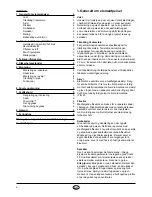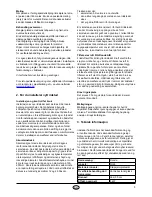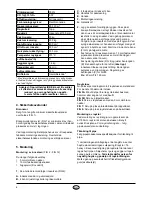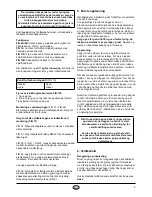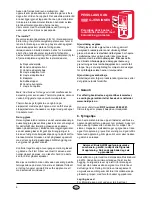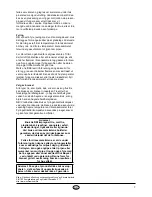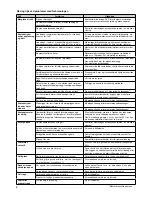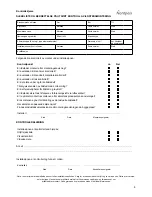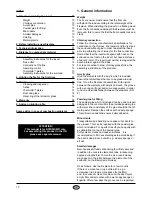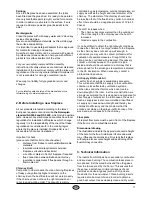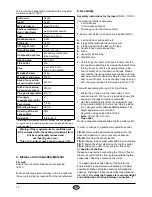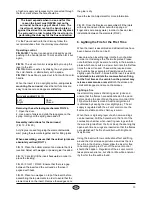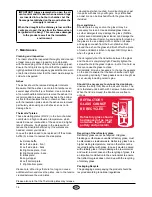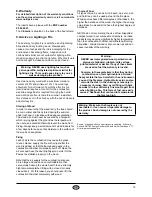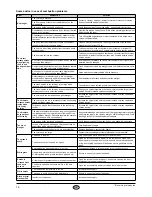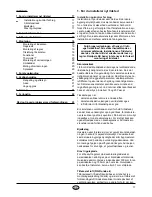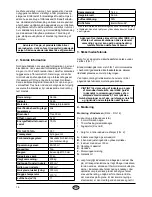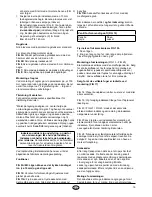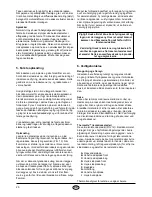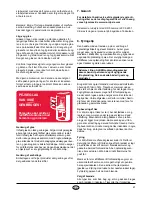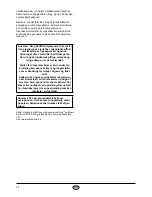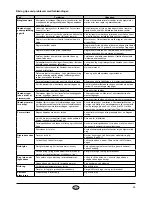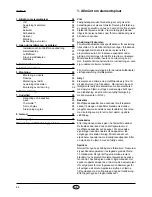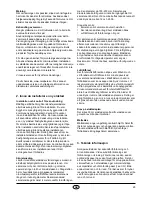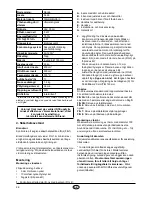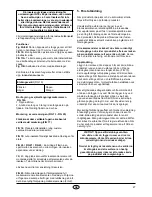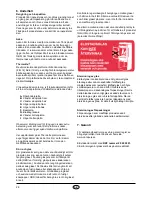
13
GB
a fresh air supply set (accessory) is connected through
the floor, mark where the hole should be.
The insert expands when in use, and for this
reason the insert must NEVER rest on the
surround, but have a gap of about 3 mm. The
insert must neither rest on the bench plate or
against the sides. It is recommended to dry stack
the surround in order to adjust the insert prior to
perforating the chimney for the flue connection.
For the flue connection to the chimney, follow the
recommendations from the chimney manufacturer.
Operating control
FIG 9A/9B:
The door is opened and closed by gently
pushing in the handle (about 10 mm) and then let it out
again.
FIG 10:
The air vent control is adjusted by moving the
lever to the left.
FIG 11A:
Remove ashes by shaking the ash grate with
the cold-handle, or alternatively with a spade.
FIG 11B:
The ashtray is pulled out in front with the cold-
handle.
When the insert is in an upright position, and
prior to
mounting the surround
, check that all functions are
easy to manoeuvre and appear satisfactory.
Air vent control
(FIG 10)
Left
Right
Open
Closed
Removing the self-closing mechanism FIG 12b
1. Open the door.
2. Use a pair of pliers and grab the long piece on the
spring. Gently pull the spring down and off.
Assembly instructions for the surround
(FIG 13 - FIG 25)
Acrylic glue is used for gluing the elements towards
wall, gluing the elements together and for filling joints.
When assembling, ensure that the vertical joints are
absolutely vertical(FIG 17).
FIG 14: Place the bottom element and ensure that it is
levelled.
Adjust with wedges or powder glue
if needed.
FIG 19: Carefully tilt the insert backwards in order to
place the lockring.
FIG 20 / FIG 21 / FIG 23:
Ensure that there is a gap
between the insert and the surround as the insert
expand with heat.
FIG 23: Place two wedges on top of the insert before
assembling the top elements in order to avoid that the
element rests on the insert. Remove the wedges once
the glue is dry.
Read the text on Adjustment for more information.
FIG 25: Once the fireplace is assembled, fill the joints
with acrylic and even them out with a sponge or
finger and some soapy water, in order to have a clear
indentation between the elements (FIG Z).
6. Lighting the Fire for the First Time
When the insert is assembled and all instructions have
been observed, a fire can be lit.
Take care when inserting logs into the burn chamber,
in order not to damage the Thermotte plates. Please
note that there might be some humidity in the insulation
plates which can result in a slower burn rate the first few
times the insert is used. These will be resolved once
the humidity has evaporated. Possibly leave the door
slightly open the first 2-3 times that the insert is used.
It
is advisable to ventilate the room well when firing
for the first time as the varnish on the product may
release some smoke or smell.
Both the smoke and
smell will disappear and are not hazardous.
Lighting a fire
Insert small dry pieces of kindling wood, ignite and
ensure that the flames have established on the wood
before closing the door. Open the air vent control (FIG
10) before the door is closed. Additional ignition air
is obtained by keeping the door slightly ajar. The air
supply is regulated with the air vent control once the
flames are stable and the chimney is warm.
When there is a glowing layer of ash, new wood logs
can be inserted. Pull the hot ember to the front of the
combustion chamber when inserting new logs so that
the wood is ignited from the front. Keep the door slightly
open each time new logs are inserted so that the flames
get established. The fire should burn with bright and
lively flames.
Using the insert with low combustion effect and firing
around the clock increase pollution as well as the risk
for a fire in the chimney. Never allow the insert or flue
to become glowing red. Turn off the air vent control
should this happen. Regulation of the air vent control
takes some experience, but after a little while a natural
rhythm for the fire will be found.
Summary of Contents for CC-RIO00-100 Ronda
Page 38: ...38 2000 600 641 1240 336 Ronda mm Ronda air 625 135 140 ...
Page 41: ...41 X FIG 3 FIG 4 ...
Page 42: ...42 FIG 5A FIG 6 FIG 7 FIG 5B FIG 8 FIG 9A FIG 9B ...
Page 43: ...43 FIG 10 FIG 11A FIG 11B FIG 12 G H F I ...
Page 45: ...45 FIG 14 FIG 15 FIG 13 124 mm 2 1 3 FIG 16 2 165 FIG 15b ...
Page 46: ...46 FIG 18 FIG 19 FIG 20 5 6 2 mm 641 mm 4 4 FIG 17 ...


